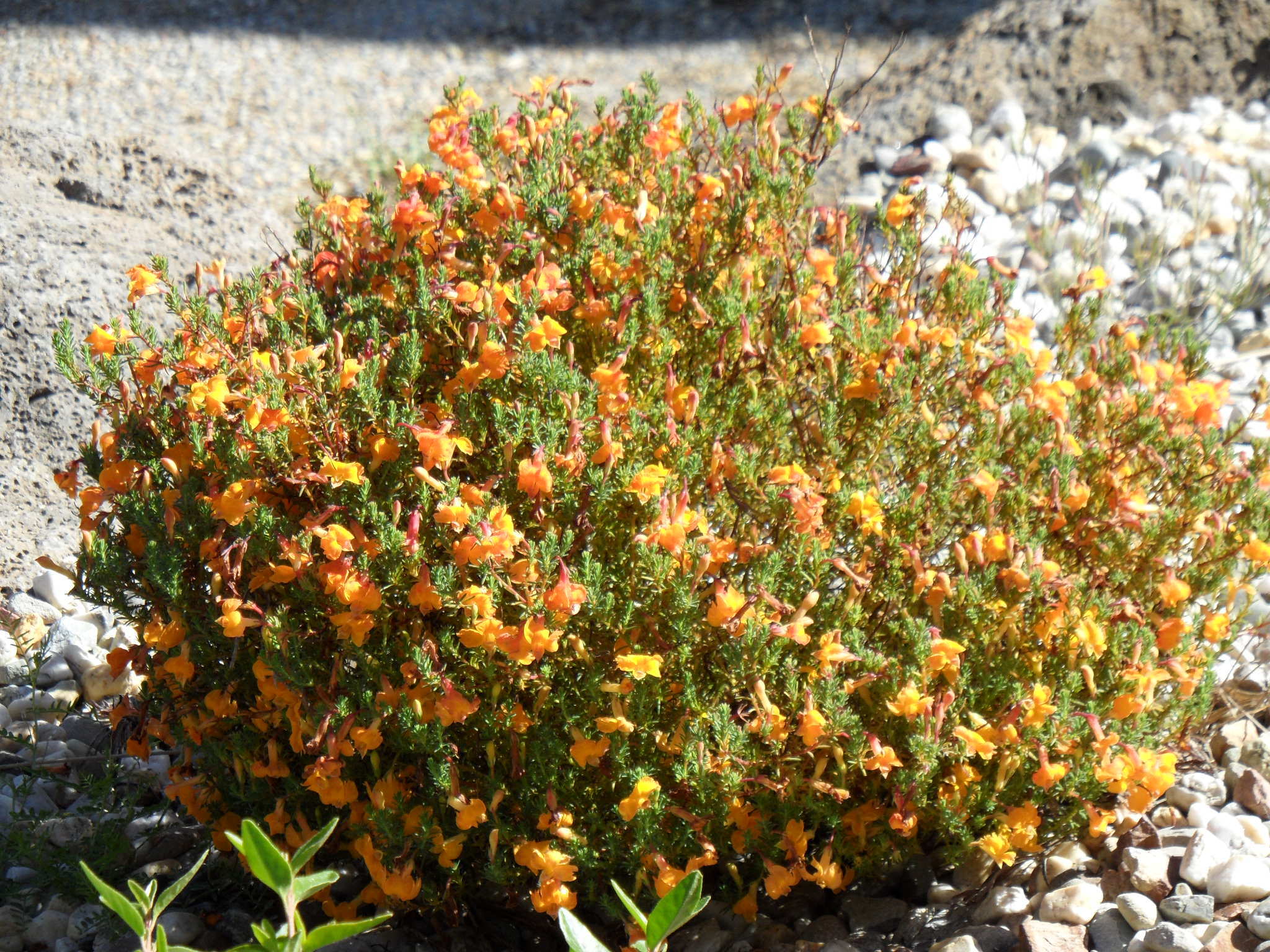
Commemorating Jean-Baptiste Leschenault de la Tour (1773–1826), botanist on the 1800–04 Baudin expedition to Australia.
Herbs or shrubs. Leaves mostly linear and stalkless. Flowers in clusters or solitary, usually terminal. Sepals 5, free. Petals 2-lipped, often vividly coloured in blue, yellow, white or red. Auricles absent. Ovary inferior, 2-chambered. Ovules arranged in 2 rows each side of the septum. Fruit a 4-valved capsule divided into hard woody parts, each containing 1 seed and leaving 5 strips of tissue attached to the stalk. [Leschenaultia]
Grown for the vividly coloured prolific flowers. Some of the most stunning colours of Australian plants are found in this genus which has many species threatened in the wild. They are, however, difficult to maintain in cooler-climate gardens and are best grown as short-lived display plants.
Cuttings, occasionally from seed.
Hairy, generally vividly coloured flowers with the anthers adhering to each other.
21 species from Australia (20 endemic species) and New Guinea.
Carolin (1992).
Source: (2002). Goodeniaceae. In: . Horticultural Flora of South-eastern Australia. Volume 4. Flowering plants. Dicotyledons. Part 3. The identification of garden and cultivated plants. University of New South Wales Press.
